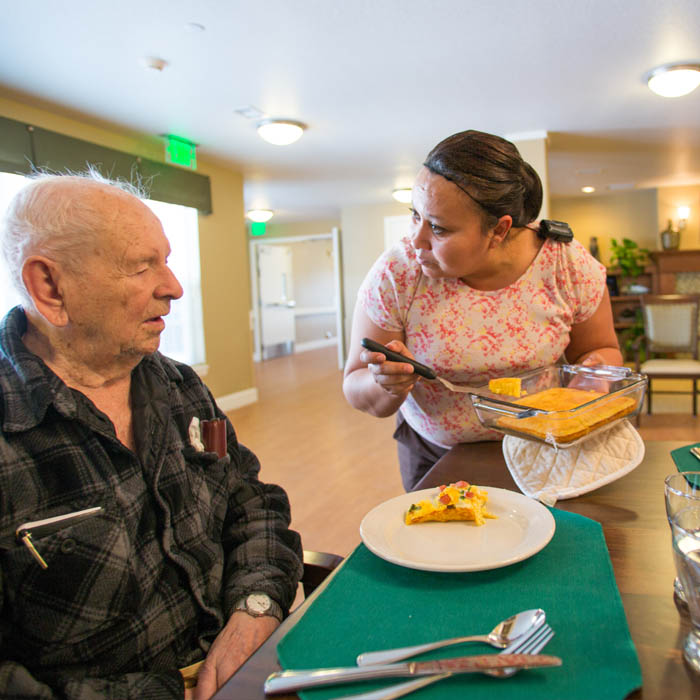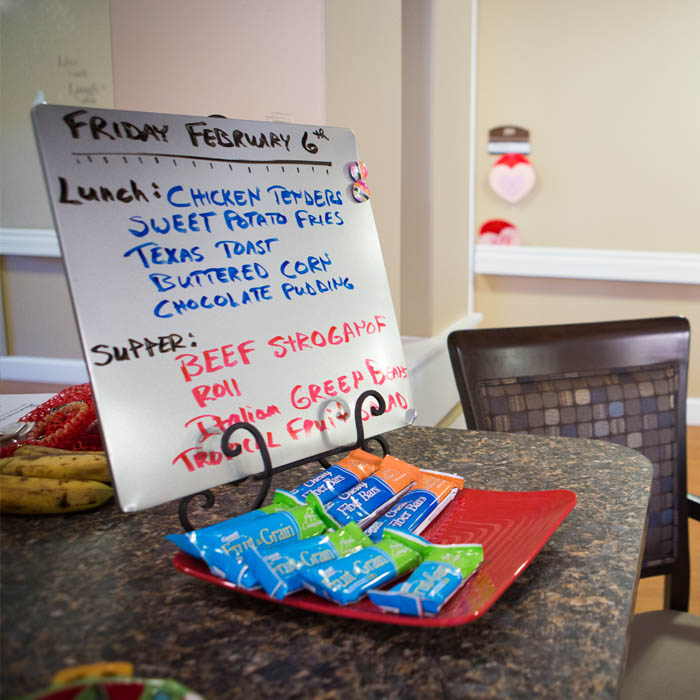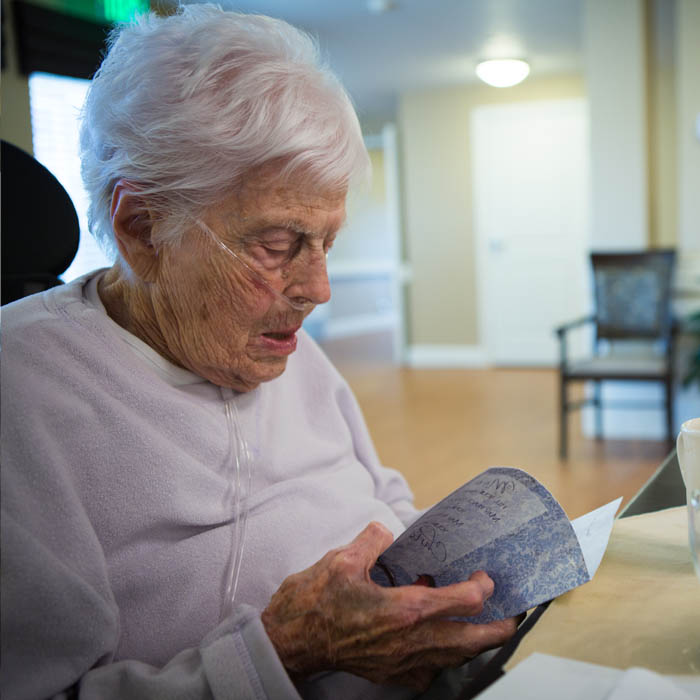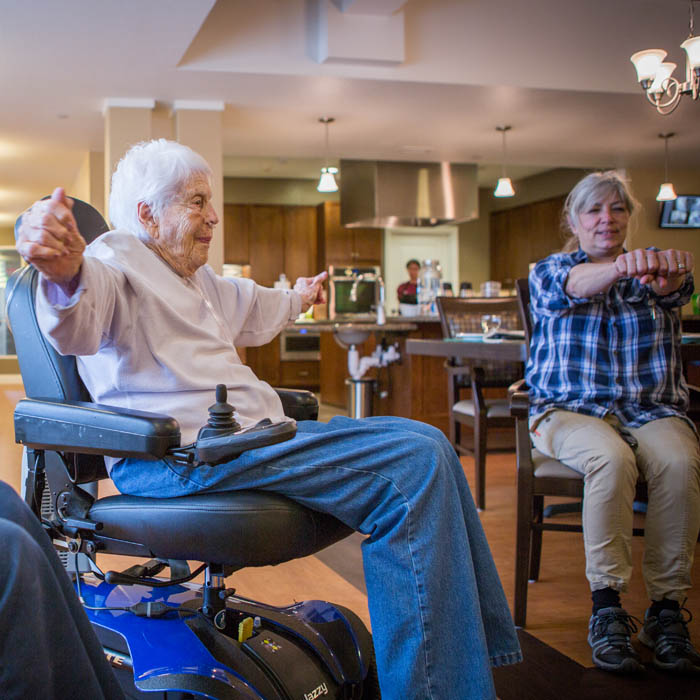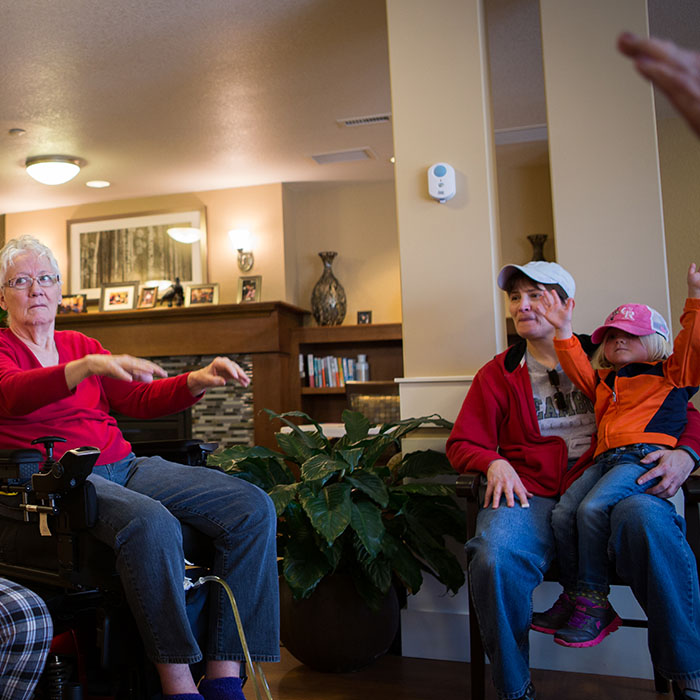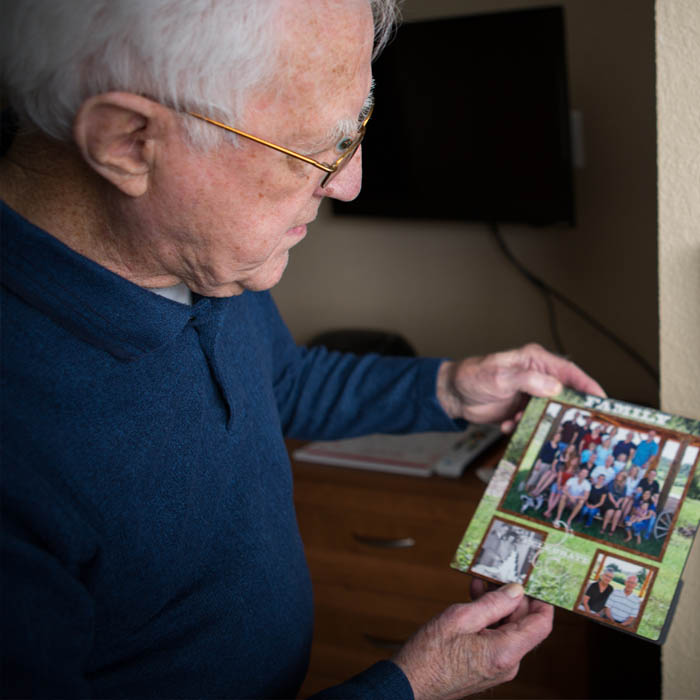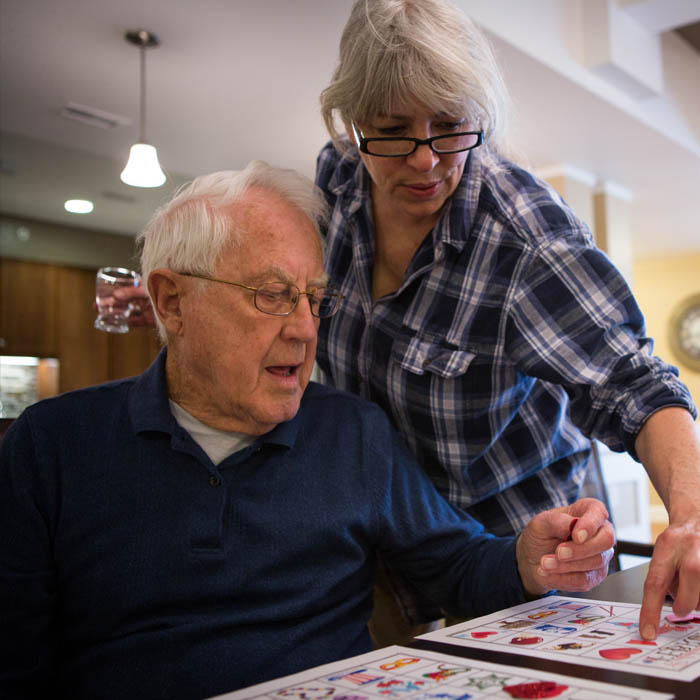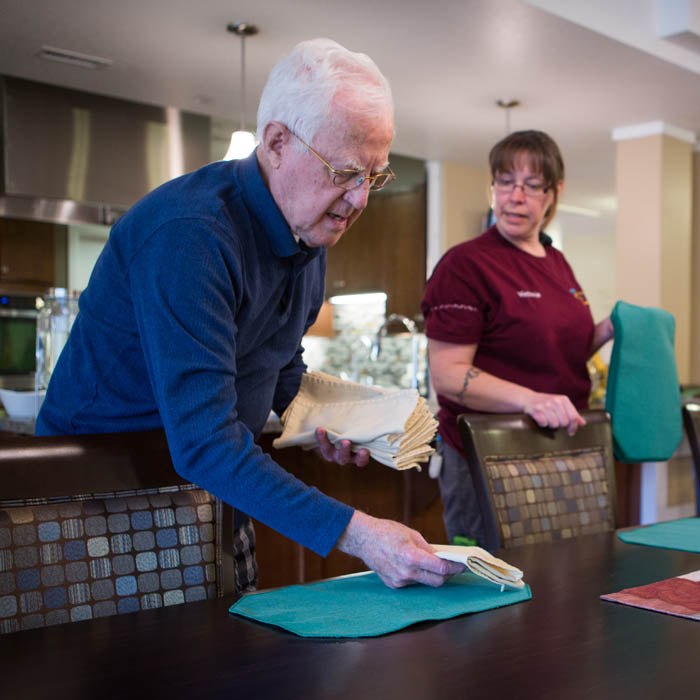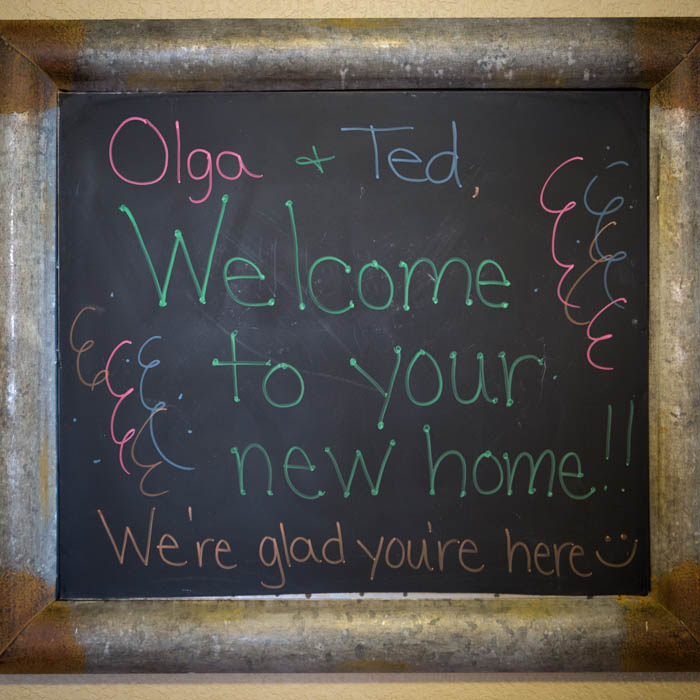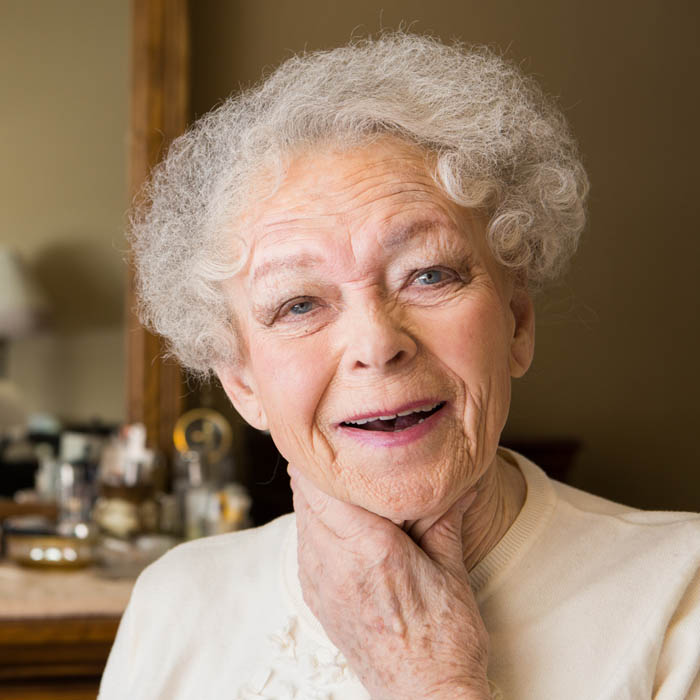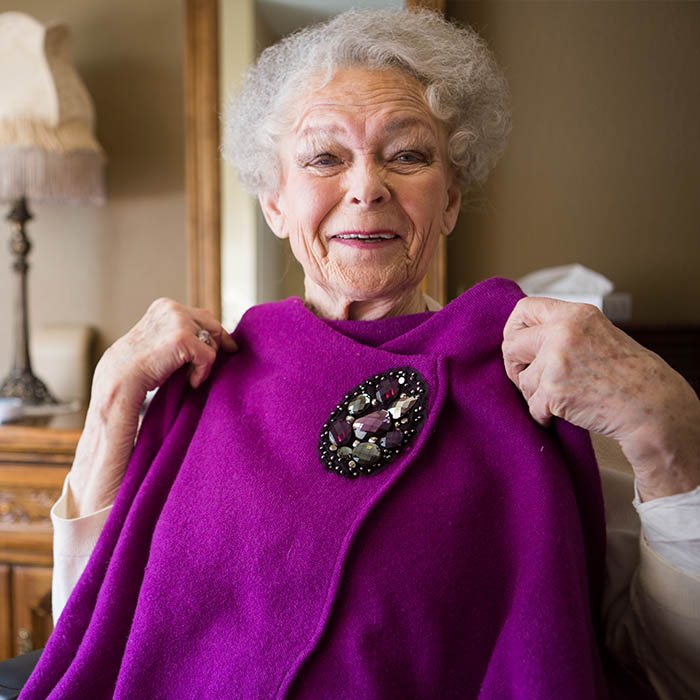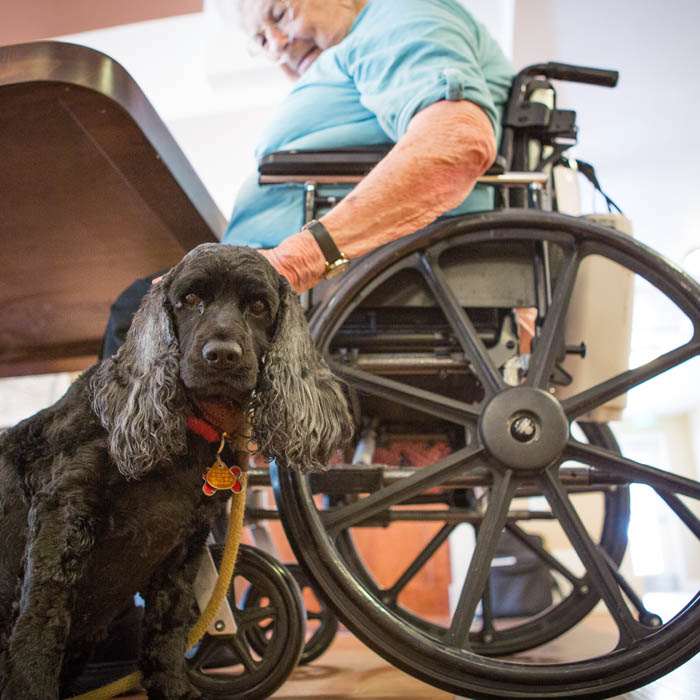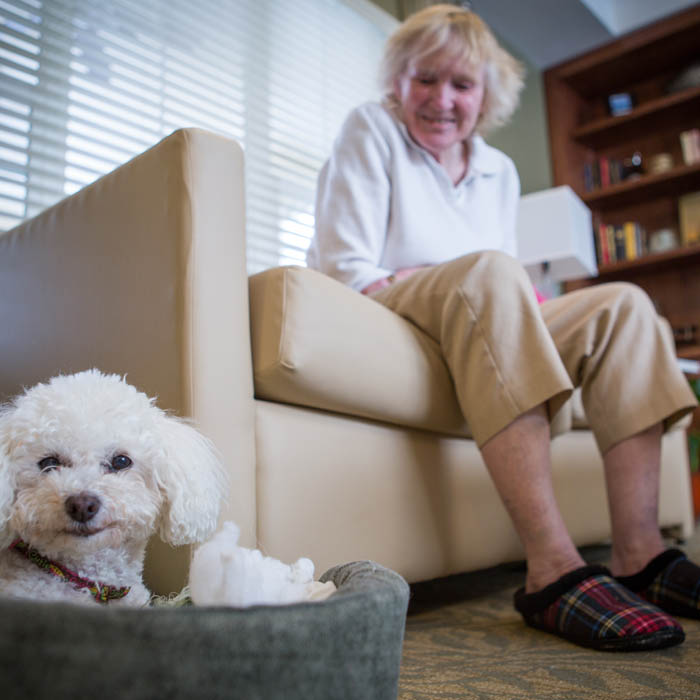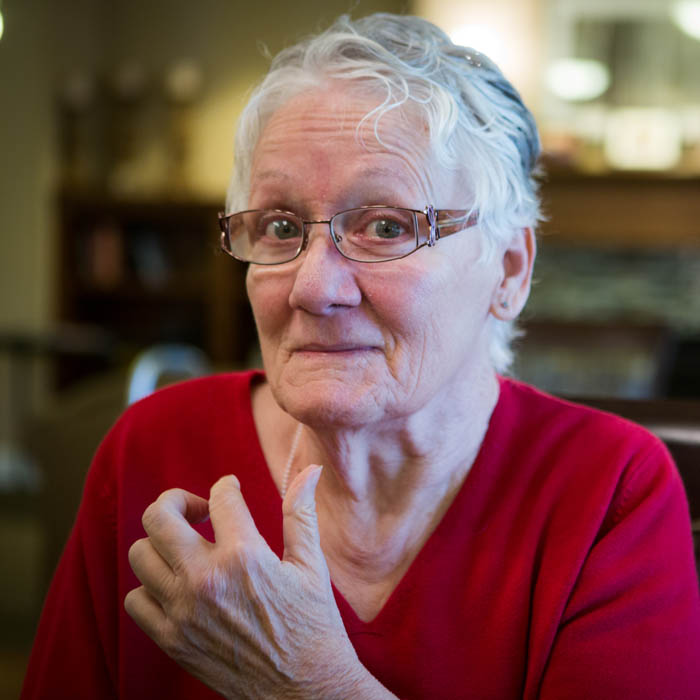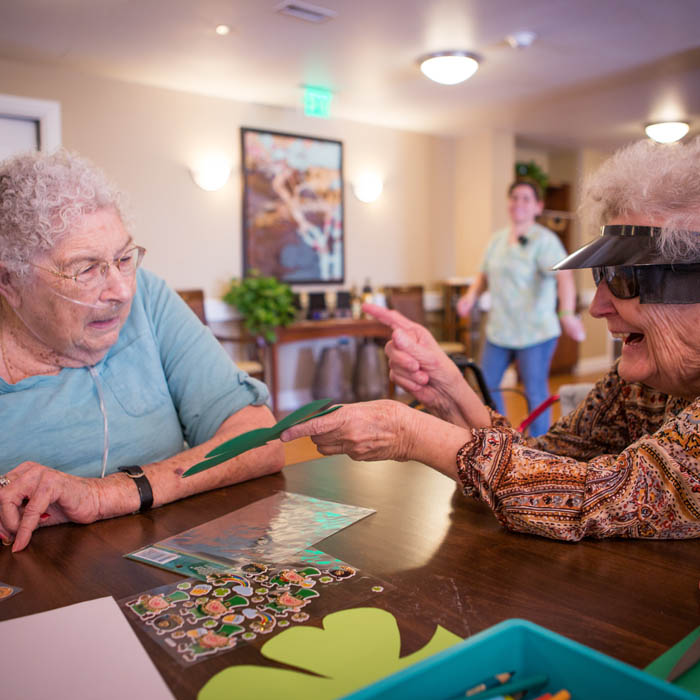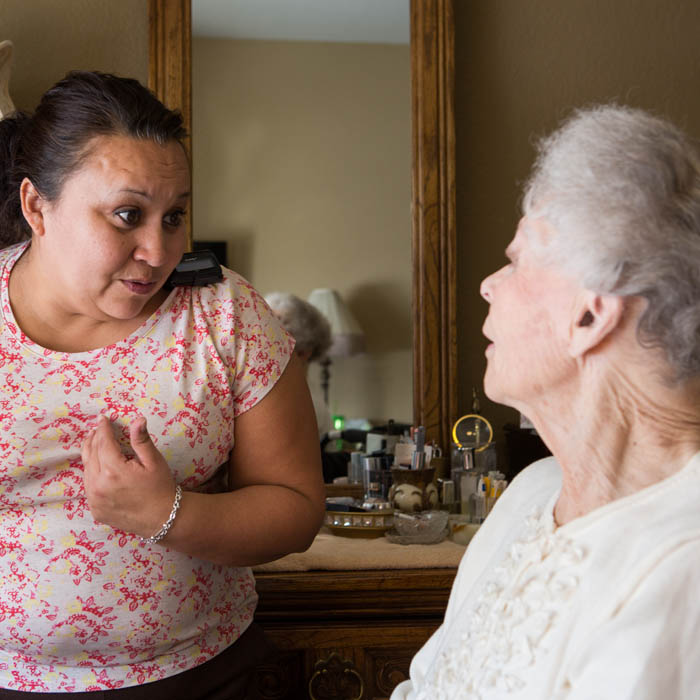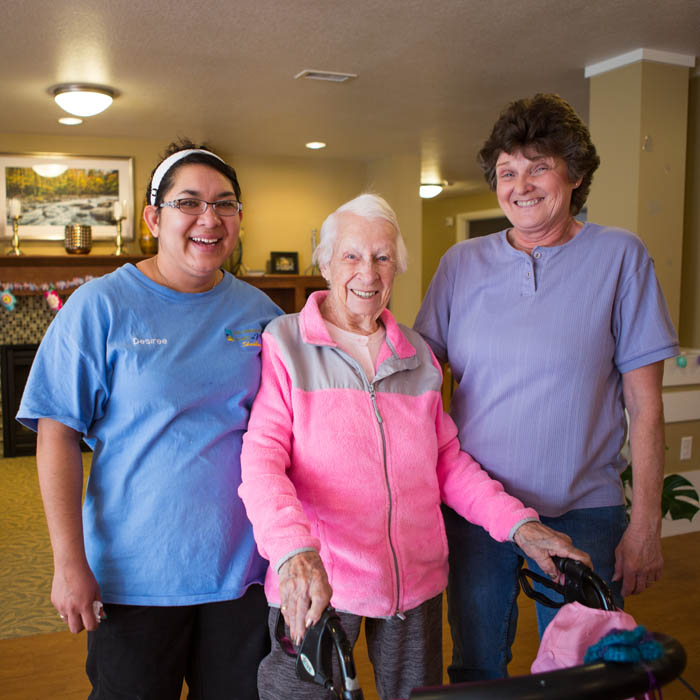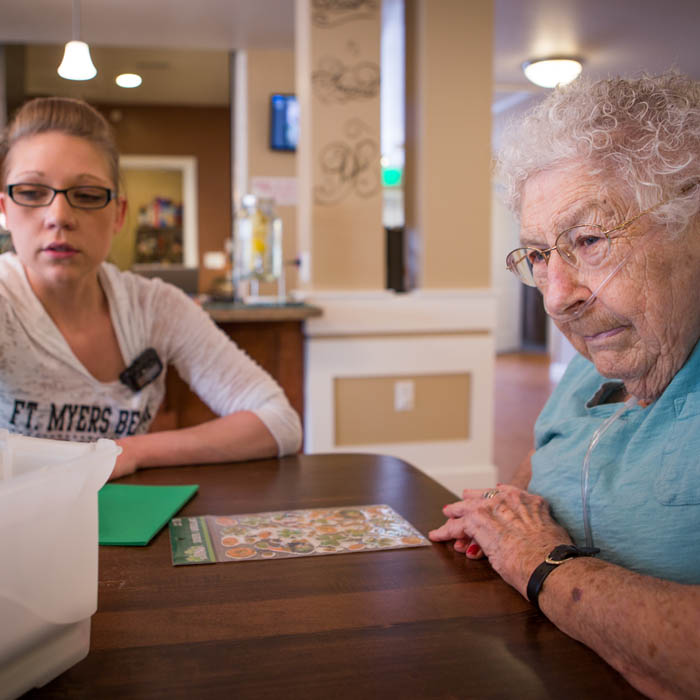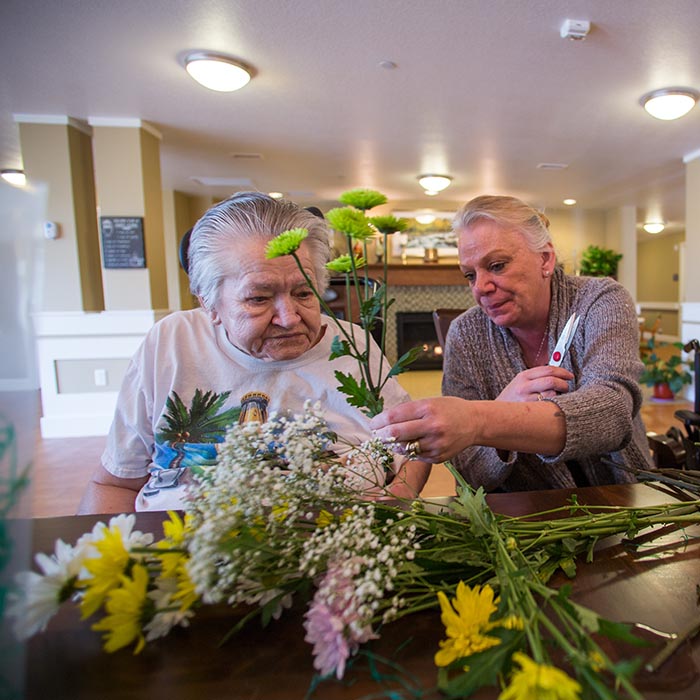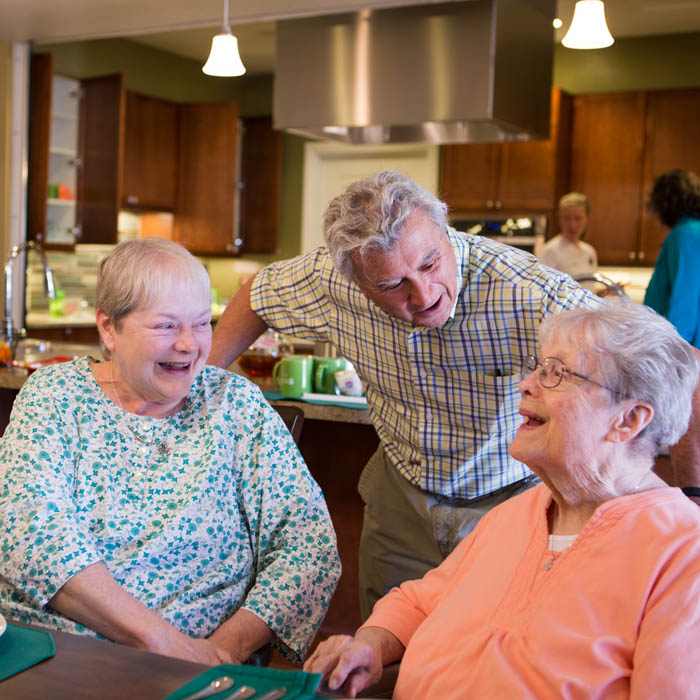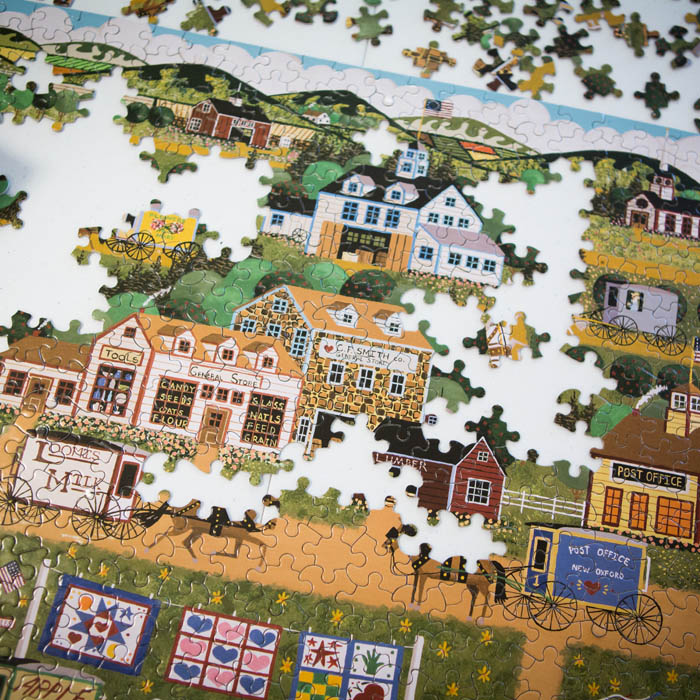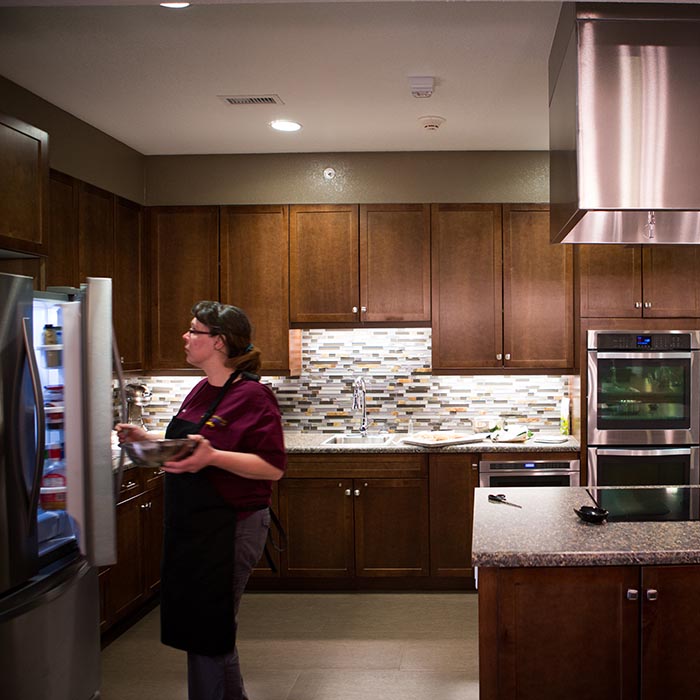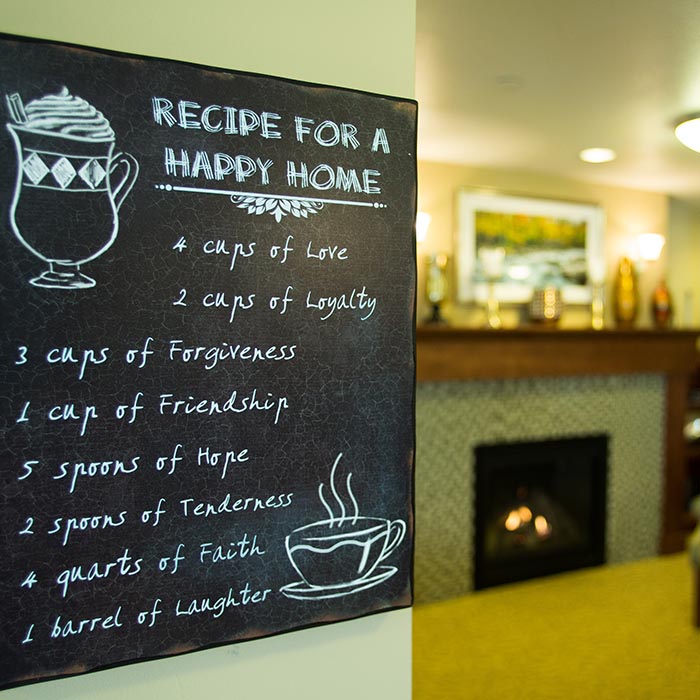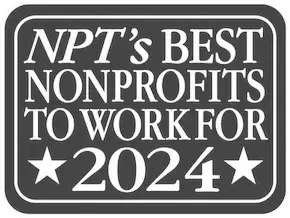
In 2014, Capital Impact Partners worked in partnership with the Loveland Housing Authority to open Colorado’s first ever GREEN HOUSE® Project. A radical new model for skilled nursing care, Green House homes are designed from the ground up to look and feel like a real home for 10-12 elders, returning control, dignity and a sense of well-being to its residents and their families.
Built on the campus of the Mirasol Senior Living Community in Loveland, this innovative alternative to the traditional nursing home features six separate 7,500 sq. foot homes with private rooms and bathrooms, combined with a family-like atmosphere of open common spaces. The Green House Homes at Mirasol are uniquely licensed together as one skilled nursing facility and able to provide its residents – a large percentage of whom are Medicaid eligible – specialized twenty-four hour nursing care.
Photojournalist Jason Houston visited the homes several times after they opened to document the daily life of the residents and staff. Here’s what he experienced.
Julia and Fred were the first couple to move into the Loveland Green House Homes. They followed several staff who worked with them at a nearby care facility, not knowing what they were getting into, but knowing they wanted a change from what they described as a “run-down and depressing situation.” The staff they followed were friends but have now become their family in what they feel is a “wonderful situation.”
Julia remarked to me, “I was blown away by the bathroom—can’t get a better advertisement than that!”
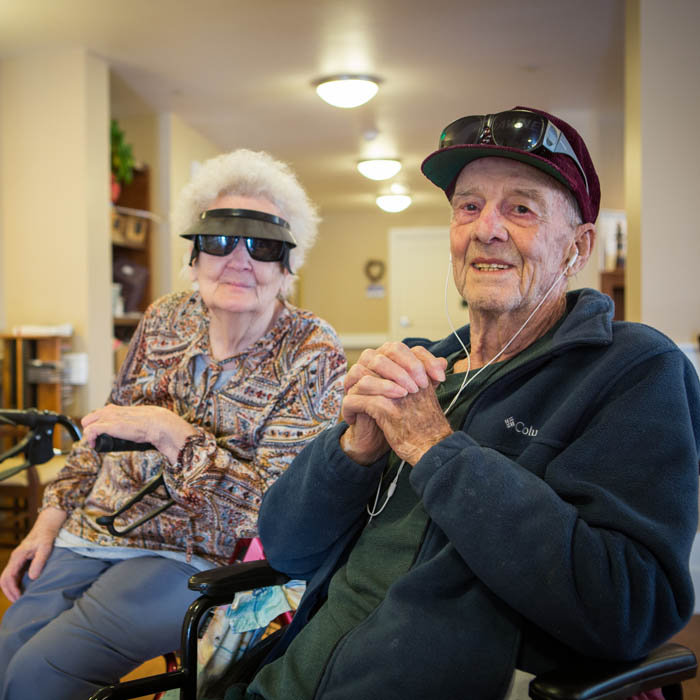
-
Meals are the highlights of most days at the Loveland Green House Homes. Groceries are brought in every week and each meal is cooked in an open kitchen – just like at home. They are true social events.
-
In each house a dietician works with the residents to build menus that reflect their individual preferences and integrate a variety of healthy options. Special requests are the norm and everyone eats well!
-
Main meals are family style, but different schedules and personal snack times are also accommodated. Here I found Bess enjoying a quiet moment while reading a card from her family.
-
While everyone has different physical abilities, I also found group exercise time to be a lively part of the day.
-
What made this session particularly fun was the addition of young Makynlee. Makynlee and her mother are good friends with Diana and visit the home often. I could see that the setting put others at ease and made visiting with families much more pleasant than, for example, going to a hospital.
Erwin struggles with his short-term memory. It resets about every 30 minutes, so I found myself having to often re-explain why I was there in the home visiting. Yet, he recalls his youth, his time in World War II and life with his wife with a storyteller’s passion and attention to detail.
His wife is in the Green House home next door. She’s struggling with dementia and he says she’s not always nice to him. But they have been married 70 years, and he says he understands. He visits every day, and if she’s still asleep he quietly crawls in bed with her and lays with her as she sleeps.
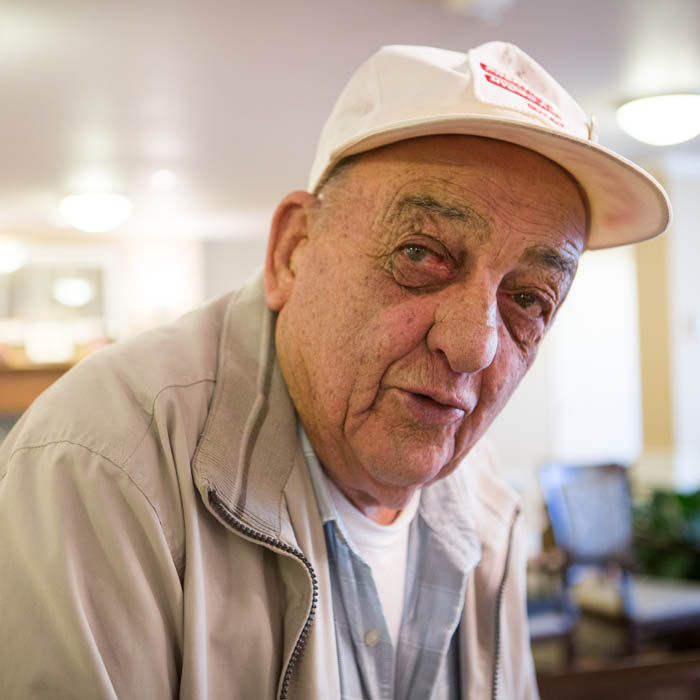
-
Preston comes from a large family he’s obviously very proud of. Looking at a picture on the wall of his family from 50 years ago, he laments there are only two of them left, but then spontaneously offers, “It’s a wonderful world…”
-
Preston gets confused easily, and sometimes becomes frustrated as a result. The nursing team in the house understand the different issues that each resident struggles with and look for alternative ways to help. Linda will sit with Preston and distract him with simple cognitive games like picture bingo.
-
Victoria has also found that by giving Preston tasks around the house that he can accomplish, such as setting the table, she can re-center Preston’s state of mind.
-
Olga and her husband Ted moved into the house the day before I took these pictures. She invited me to see her room as she was doing her makeup. Olga was born in Latvia in 1925 to a wealthy family, at a time when life in eastern Europe was uncertain at best and, for many, full of unspeakable tragedy. Her family fled Latvia for Poland, then to Germany and eventually the United States because of the war. Yet her tragedies are not what define her.
-
She was a model and a dancer and a singer. Elegant and beautiful, she was sought after for her ‘northern looks’ and pursued daily by young men until she married her husband Ted, who’s now at the Green House home with her.
-
Olga lost both of her “long and lean” legs a few years ago to poor circulation, which she says makes her heart ache. She doesn’t “want to be old”— she says, often adding that she doesn't “know how to be old.” During recovery from her first amputation, she showed the nurse in physical therapy a standing split, pointing what was left of the leg straight at the ceiling. She still has that spark.
Don and Kay were moving in with the help of their son, Greg. One of their two rooms would become their bedroom and the other their private living room. Part of the move-in process is working with the house “Sage” – named Pat (seated in middle). She is 80 years old and lives in the nearby independent-living condos. She volunteers to work as a liaison between staff and residents, helping newcomers become acquainted with how it all works and taking note of preferences, ranging from when they like to bathe to any special meal requests.
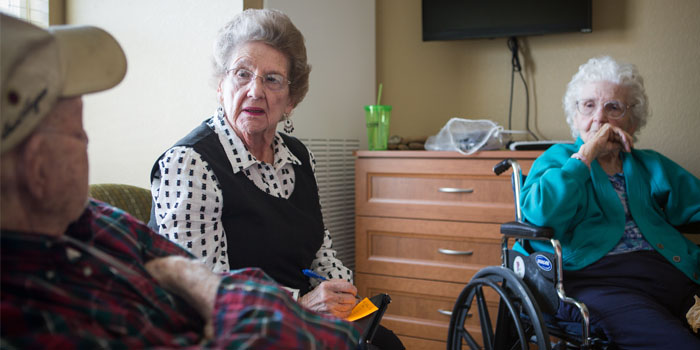
-
I was surprised to see dog’s during one visit to Loveland, but Green House homes are often pet-friendly. Steele, a rescued cocker spaniel, travels with Nona, a daughter of one of the residents who visits daily. I watched as Steele moved excitedly from resident to resident—all of whom, in turn, happily accepted the attention.
-
Marjorie (60) and Frosty (50, in dog years) are inseparable. Marjorie says she’d be lost without Frosty.
-
Diana struggles physically with Parkinson's, yet her mind is still one of the sharpest in the house. She is the self-proclaimed bingo champion and I’m sure that she rarely loses.
-
On another day, I ran into Lucille (seated left) who was the first resident to move into the Loveland Green House Homes. Even at 94, and with failing eyesight, I found her busily preparing for St. Patrick’s Day.
Sam Betters, the Executive Director of the Loveland Housing Authority, partnered with Capital Impact to bring the first Green House homes to Colorado. In a lighthearted moment with Penny Wise, Capital Impact’s de facto mascot, he gave me a behind the scenes account of that process, the support of the many partners involved and how they utilized a unique financial tool called New Markets Tax Credits. This U.S. Treasury program is designed to encourage investments in projects that benefit low-income people – of which there are many in this group of Green House homes. He was clearly grateful for the support of Capital Impact who he saw as more than just a normal lender. “They provided the critical financing, expertise and most importantly, the hand holding that consummated in the successful closing of our transaction. There were times during our due diligence process that this project looked like it was going to come apart at the seams. It is when the going gets tough that the true character and value of your partner is demonstrated. We couldn’t have done this project without the assistance provided by Capital Impact Partners.”
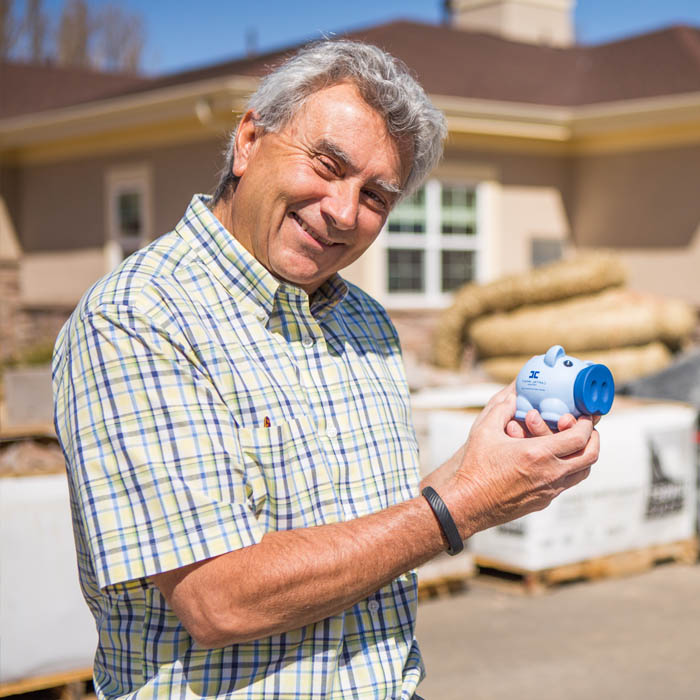
-
All of the Certified Nursing Assistants at Green House homes are referred to as “shahbaz.” These versatile positions allow for staff to provide a wide range of assistance, including personal care, activities, laundry, and meal planning, preparation, and service. Many have worked in other elder care environments, some for a decade, some for much more. Rachel, like everyone I spoke to, felt passionately that this was the best place they had ever worked. Comments ranged from having twice the staff to resident ratios of most homes to having support for taking the time to attend personally to residents and just talk, person to person.
-
Desiree (standing left), with over 10-years of previous nursing experience. She told me what stands out the most for her is the idea that she’s empowered by the Green House philosophies to see each resident as an individual and build relationships. She then paused and said, “It’s love.”
-
Moriah, another Shahbaz, has worked in long-term care in other facilities and was always frustrated by not having the time or resources to care for people the way she wanted to. She applied to the Loveland Green House Homes as it was being built and became one of the first staff members. She liked the philosophy, but didn’t really know what to expect. She now has time to talk and do crafts with the residents — which obviously fulfills her.
-
All staff, even those who are not a Shahbaz, find a number of ways to engage with residents no matter what their physical or mental state. I had been visiting over the winter months, and on this particular day, Jan (seated middle)—who actually is in charge of transportation—decided to brighten things up with a flower-arranging activity.
-
Sam Betters (standing middle), the Executive Director of the Loveland Housing Authority, had a personal stake in seeing these homes get built. He too has struggled with the very real challenges of finding care of his own parents. “I knew that there had to be a better option than the traditional institutional models for elder care” he told me.
As Julia took a break from preparing for the upcoming St. Patrick’s Day celebrations to mug for the camera, it was clear to me that even though she and her fellow residents were dealing with the limitations of growing older, the Green House home provided many opportunities to ensure a full life.
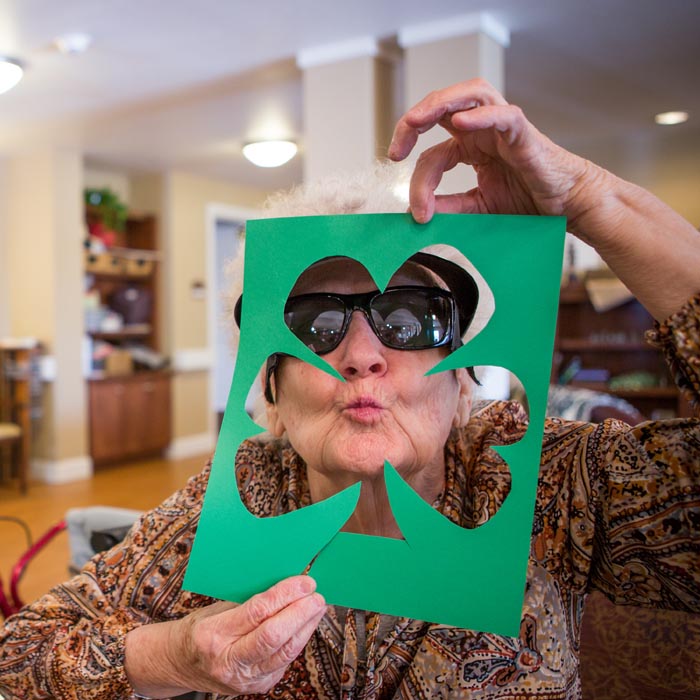
-
In a quiet moment, when the staff was taking a chance to tidy up, I took these series of photographs.
-
It gave me a chance to pause and reflect on the fact that I was indeed at a nursing facility and not someone’s home.
-
The beautiful way these houses—homes—are run, it can be an easy thing to forget.
